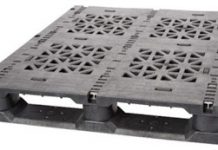I don’t write frequently about solar stocks, especially photovoltaic (PV) manufacturers. While the industry is almost certain to be a spectacular growth story, it’s also a story that everyone already seems to know about. Trader Mark put it well: "these stocks are too driven by retail hands." The PV story clicks with people, and when that happens, they often buy stocks with little regard to what they are worth. PV stocks are so psychological, we’d all do well to lie down on a couch before buying.
As the IRS is unlikely to allow psychotherapy as an "investing expense," I have looked to other, less popular sectors of renewable energy, and to energy efficiency in this series. I sidestep the issue by investing in conglomerates and related industries such as electricity transmission and distribution, or agriculture which are less exciting, but will benefit from the same trends. That is why I’m halfway through this series, and only now talking about the most popular form of renewable energy, solar photovoltaics.
![]() Since Sharp (SHCAY (ADR), TSE:6753) is a conglomerate, its PV manufacturing is often overlooked by solar investors, despite the fact that it’s the world’s largest manufacturer of solar cells (according to Sharp, independent industry statistics are hard to come by.) Admittedly, PV accounts for considerably less than 10% of their sales: PV falls under "other Electronic components" in their sales breakdown, and that category was only 9.6% of total sales in 2007. In the last nine months of 2007, solar sales declined, most likely due to limited supplies of crystalline silicon. They have taken steps to assure future crystalline silicon supplies, and are aggressively expanding their thin film production.
Since Sharp (SHCAY (ADR), TSE:6753) is a conglomerate, its PV manufacturing is often overlooked by solar investors, despite the fact that it’s the world’s largest manufacturer of solar cells (according to Sharp, independent industry statistics are hard to come by.) Admittedly, PV accounts for considerably less than 10% of their sales: PV falls under "other Electronic components" in their sales breakdown, and that category was only 9.6% of total sales in 2007. In the last nine months of 2007, solar sales declined, most likely due to limited supplies of crystalline silicon. They have taken steps to assure future crystalline silicon supplies, and are aggressively expanding their thin film production.
Thin Film Solar
Sharp is also rapidly expanding their production of amorphous Silicon (a-Si) thin film PV. I find this particularly interesting, because unlike the other thin film technologies, there is no practical limitation on the quantity of a-Si production due to raw materials, unlike the non-silicon CIGS and CdTe technologies. (You can read my discussion of the impact of possibly limited Tellurium supplies on First Solar (Nasdaq:FSLR) here by scrolling down to the bottom of the linked page.)
While some a-Si manufacturers have given the technology a reputation for low quality, many manufacturers produce high quality panels. Amorphous Silicon, like other thin film technologies, tends to have a lower conversion efficiency than traditional crystalline silicon modules, but I was surprised to hear in Sharp’s New Year Address that because their thin film more thermally robust in hot climates, their thin film panels actually operate at higher efficiency than their crystalline silicon panels in places like Spain. For this reason, they are targeting large scale PV installations in Southern Europe with their thin film modules, while their crystalline PV modules are targeted at smaller installations in cooler areas. I had previously thought that thin film was primarily useful for the same things as conventional PV, and also for Building Integrated Photovoltaics (BIPV.) I had not expected thin film to have higher efficiency in any context.
Energy Efficiency
PV is less than 10% of Sharp’s business, but many of their other products should also be of interest to Alternative Energy investors. Japan is one of the most environmentally and socially aware countries, and as someone more accustomed to listening to investor presentations from North American companies, Sharp’s presentations are a culture shock. Profit numbers play second fiddle to environmental and social responsibility, the reverse of what I’m normally used to.
Most of Sharp’s other products are already familiar. They include LCD screens and other components for a wide variety devices, as well as televisions and information equipment. This is where the company’s environmental awareness pays off, with Sharp’s LCD televisions often near or at the top of energy saving rankings. This is in contrast to Philips, which is profiled in this series for their efficient lighting business, not for their televisions.
Historically, United States government ratings only accounted for energy use of televisions in standby mode, a problem which will soon be rectified. As of November 2008, Energy Star 3.0 specifications (see chart) will come into effect in the United States which will also take into account energy use when the television is on, and will make it easier for consumers to compare the true energy usage of televisions. This should benefit energy-conscious Sharp relative to competitors, and LCDs relative to Plasma displays.
Perhaps even more than Europeans, the Japanese have been thinking about energy for a long time (no doubt in large part because they have to import most of it and therefore pay more for it than North Americans.) Since most North Americans are only now waking up to the need to save energy, a Japanese company which has long known how to please energy-conscious consumers should be able to use those skills as more consumers become aware of the life-cycle costs of their electronic purchases.
Since a large portion of Sharp’s revenues come from consumer products, lower consumer spending and a possible recession in the United States could easily lead to a sharp drop in the stock price. If that happens, clean energy investors should take that opportunity to acquire one of the world’s top solar and energy efficiency companies on the cheap.
Click here for other articles in this series.
DISCLOSURE: Tom Konrad and/or his clients have long positions in SHCAY.
DISCLAIMER: The information and trades provided here are for informational purposes only and are not a solicitation to buy or sell any of these securities. Investing involves substantial risk and you should evaluate your own risk levels before you make any investment. Past results are not an indication of future performance. Please take the time to read the full disclaimer here.










Cool post. We added it to our green blog round-up at http://www.mygreenelement.com. Thanks – TK